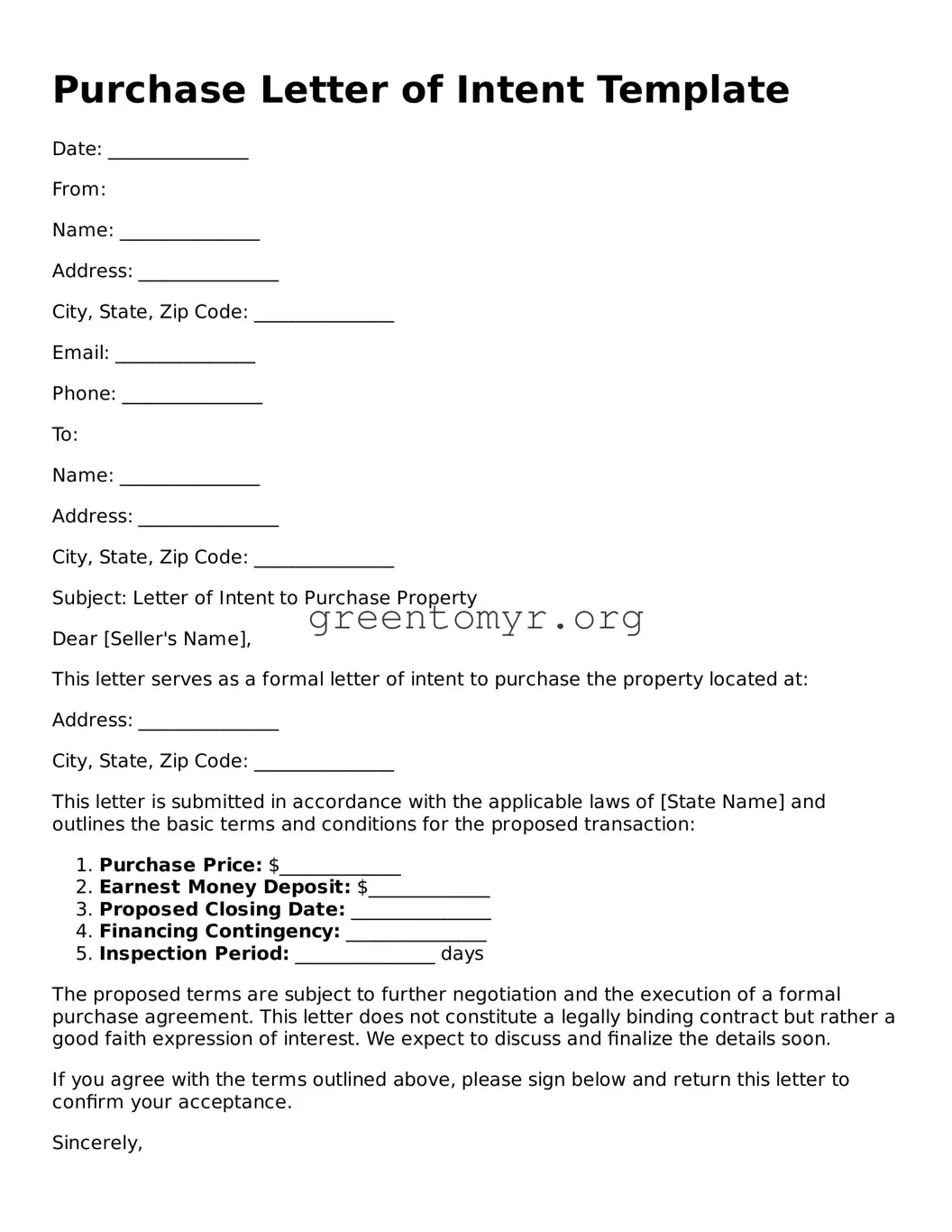Purchase Letter of Intent Template
Date: _______________
From:
Name: _______________
Address: _______________
City, State, Zip Code: _______________
Email: _______________
Phone: _______________
To:
Name: _______________
Address: _______________
City, State, Zip Code: _______________
Subject: Letter of Intent to Purchase Property
Dear [Seller's Name],
This letter serves as a formal letter of intent to purchase the property located at:
Address: _______________
City, State, Zip Code: _______________
This letter is submitted in accordance with the applicable laws of [State Name] and outlines the basic terms and conditions for the proposed transaction:
- Purchase Price: $_____________
- Earnest Money Deposit: $_____________
- Proposed Closing Date: _______________
- Financing Contingency: _______________
- Inspection Period: _______________ days
The proposed terms are subject to further negotiation and the execution of a formal purchase agreement. This letter does not constitute a legally binding contract but rather a good faith expression of interest. We expect to discuss and finalize the details soon.
If you agree with the terms outlined above, please sign below and return this letter to confirm your acceptance.
Sincerely,
_________________________
[Your Name]
_________________________
[Your Signature]
Date: _______________
Accepted by:
_________________________
[Seller's Name]
_________________________
[Seller's Signature]
Date: _______________
